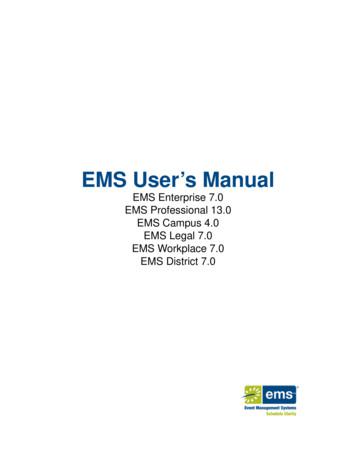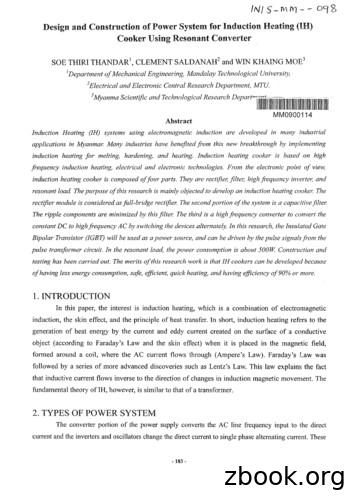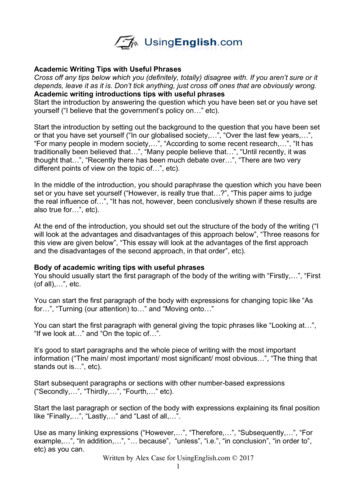Induction Heating Simulation In EMS - EMWorks
Induction Heating Simulation in EMS Induction heating explained Induction heating is an accurate, fast, repeatable, efficient, non-contact technique for heating metals or any other electrically-conductive materials. By applying a high-frequency alternating current to an induction coil, a time-varying magnetic field is generated. The material to be heated is placed inside the magnetic field, without any contact to the coil. The alternating electromagnetic field induces eddy currents in the workpiece (material to be heated), resulting in resistive losses, which will be converted to heat inside the workpiece. Thus, material heated by induction heating should have high electrical conductivity. The material of the workpiece may be a metal such as steel, copper, aluminum or brass or it can be also a semiconductor such as carbon, graphite or silicon carbide. Ferrous metals are heated by induction more easily than other materials. That is so because, in addition to the eddy currents, another heating mechanism occurs. The material's iron crystals are magnetized and demagnetized over and over by the alternating magnetic field. This causes the magnetic domains to flip rapidly back and forth, leading to hysteresis losses, which result in heat. Figure 1 shows a typical induction heating setup. Figure 1 - Induction heating setup Electromagneticworks Inc. 7709 Cordner, Lasalle, Qc, H8N 2X2, CANADA 1 800 397 1557 1 514 612 0503 info@emworks.com
Applications Industrial applications such as induction hardening, induction brazing, induction tempering, induction welding Domestic application: the main domestic application is induction cooking. Medical applications: annealing steel tubes, brazing miniature medical parts, soldering surgical tools, heating catheter tipping dies Mathematical modeling of the induction heating process In the past three decades, heating by induction has become the preferred technique in metalworking applications. This is one of the most powerful and promising methods in modern electromagnetic processing of materials because heating by induction provides a lot of advantages. Many mathematical analysis and numerical simulation methods have been developed and applied in design of induction heating system and process. Electromagnetic model The magneto-thermal phenomena descriptive equations are obtained from Maxwell's equations. The basic classical relation of electromagnetic model depended on the material characteristic is: Where, A is magnetic vector potential, Js is the source current density in the induction coil, µr is relative magnetic permeability of the material, σ is electrical conductivity of the material. ρ 1/σ, where ρ is electrical resistivity. The constant µ0 4π 10e-7 H/m is the permeability of free space. When the excitation current in the coil is assumed to be sinusoidal with a frequency ω: Where A is now the phasor of the magnetic vector potential A, and Js is now the phasor of the source current density. Electromagneticworks Inc. 7709 Cordner, Lasalle, Qc, H8N 2X2, CANADA 1 800 397 1557 1 514 612 0503 info@emworks.com
Thermal model Temperature field Eddy current produce heat by the Joule effect. The equation can be written as below: Where Je is the induced current density in the workpiece. Q is the rate of heat generation within the material. Therefore, the transient heat conduction can be described by the equation below: Where λ, γ,, and Cp are, respectively, the thermal conductivity, density, and specific heat of the workpiece. Figure 2 - Procedure of numerical simulation Electromagneticworks Inc. 7709 Cordner, Lasalle, Qc, H8N 2X2, CANADA 1 800 397 1557 1 514 612 0503 info@emworks.com
Electromagnet-Thermal coupling capability of EMS EMS ensures a Multi-physics simulation by the capability of coupling between electro-magnetic- structuralthermal field. In our case, an electro-magnetic- thermal simulation was carried on. To solve an induction heating problem in time varying domain, a transient magnetic study coupled to thermal analysis in EMS is needed. The Transient Magnetic analysis belongs to the low-frequency electromagnetic domain or regime; i.e. displacement currents are neglected. It calculates magnetic fields that vary over time. These fields are typically caused by surges in currents or voltages. This type of analysis can be linear or non-linear. It also addresses eddy currents, power losses and magnetic forces. The pertinent Maxwell’s equations for this type of analysis: where E is the electric field, and B is the magnetic flux density. The constitutive relation that connects B and H: where σ is the magnetic permeability, in general a function of H. Hc is the coercive force or coercivity The constitutive relation that connects J and E: Problem description In this example, a sphere inside a coil will be heated by induction heating phenomenon. Figure 3 shows a 3D CAD of simulated model. The excitation waveform is sinusoidal and the frequency is 60 Hz. Electromagneticworks Inc. 7709 Cordner, Lasalle, Qc, H8N 2X2, CANADA 1 800 397 1557 1 514 612 0503 info@emworks.com
Figure 3 - The simulated model Simulation setup After creating an Transient Magnetic study coupled to thermal analysis in EMS, four important steps shall always be followed: 1. 2. 3. 4. apply the proper material for all solid bodies apply the necessary electromagnetic inputs apply the necessary thermal inputs mesh the entire model and run the solver Materials Both coil and sphere are made of copper. Electromagneticworks Inc. 7709 Cordner, Lasalle, Qc, H8N 2X2, CANADA 1 800 397 1557 1 514 612 0503 info@emworks.com
Table1 - Material properties Components / Bodies Relative Permeability Electrical Conductivity Thermal Conductivity (W/m*K) Specific Heat (J/Kg*K) Masse Density (Kg/m 3) Sphere/ Coil 1 5.840e 7 401 384 8960 Electromagnetic inputs In this study, only a wound coil is assigned as electromagnetic input. Table 2 - Coil information Wound coil Number of turns RMS total current 1000 6.468 A Meshing Meshing is a very crucial step in any FEA simulation. EMS estimates a global element size for the model taking into consideration its volume, surface area, and other geometric details. The size of the generated mesh (number of nodes and elements) depends on the geometry and dimensions of the model, element size, mesh tolerance, and mesh control. In the early stages of design analysis where approximate results may suffice, you can specify a larger element size for a faster solution. For a more accurate solution, a smaller element size may be required. Figure 4 - Meshed model Electromagneticworks Inc. 7709 Cordner, Lasalle, Qc, H8N 2X2, CANADA 1 800 397 1557 1 514 612 0503 info@emworks.com
Electromagnetic-thermal results After finishing the setup, a successful run of Transient Magnetic simulation coupled to thermal analysis generates both magnetic and thermal transient results. In the figure below is a 3D plot of magnetic flux density in the sphere at 50 ms. Figure 5 - Magnetic flux density in the sphere at 50 ms. In the figure 6, 3D plot of current density distribution shows the circulation of eddy current in the surface of sphere. Electromagneticworks Inc. 7709 Cordner, Lasalle, Qc, H8N 2X2, CANADA 1 800 397 1557 1 514 612 0503 info@emworks.com
Figure 6 - Current density distribution in the sphere, section plot Electromagneticworks Inc. 7709 Cordner, Lasalle, Qc, H8N 2X2, CANADA 1 800 397 1557 1 514 612 0503 info@emworks.com
Figure 7 - Eddy current animation in the sphere at 0.044 second Electromagneticworks Inc. 7709 Cordner, Lasalle, Qc, H8N 2X2, CANADA 1 800 397 1557 1 514 612 0503 info@emworks.com
Figure 8 shows the temperature distribution in the sphere after 1.6 hour. Figure 8 - Temperature in the sphere at 1.6 hour Electromagneticworks Inc. 7709 Cordner, Lasalle, Qc, H8N 2X2, CANADA 1 800 397 1557 1 514 612 0503 info@emworks.com
Figure 9 - Temperature evolution Conclusion The electro-thermal simulation capability in EMS enables users to effectively test their coil designs for induction heating application. Engineers can now simulate multiple designs of their coils and choose the most effective coil based on the component to be heated. By studying the temperature distribution inside the heated component, one can complete understand the heating profile. Electromagneticworks Inc. 7709 Cordner, Lasalle, Qc, H8N 2X2, CANADA 1 800 397 1557 1 514 612 0503 info@emworks.com
Induction Heating Simulation in EMS Induction heating explained Induction heating is an accurate, fast, repeatable, efficient, non-contact technique for heating metals or any other electrically-conductive materials. By applying a high-frequency alternating current to an induction coil, a time-varying magnetic field is generated.
EMS API Reference Guide 2012 Dean Evans & Associates, Inc. CONFIDENTIAL 20 Aug 2012 9 EMS Professional customers – enter “EMSData” EMS Workplace, EMS Campus, EMS Enterprise, EMS Legal and EMS District customers - typically named “EMS” 9.
EMS User’s Manual EMS Enterprise 7.0 EMS Professional 13.0 EMS Campus 4.0 EMS Legal 7.0 EMS Workplace 7.0 EMS District 7.0
Ed Hill, Senior EMS Coordinator, Kern County EMS Kara Davis RN, EMS Systems Director, NorCal EMS Chris Clare RN, Data Systems Manager, Los Angeles County EMS . California EMS System Core Quality Measures 4 Table of Contents EMS System Core Quality Measures Project
County EMS Agency Field Operations Guide An operational guidance document for EMS Agency Personnel, EMS Duty Chief, EMS Commander, and EMS Director REFERENCE #817 Revised November 2008 Santa Clara County Emergency Medical Services Agency 976 Lenzen Avenue San Jose, California 95126 1. . EMS field units (EMS 2-6/Squad1),
induction heating for melting, hardening, and heating. Induction heating cooker is based on high frequency induction heating, electrical and electronic technologies. From the electronic point of view, induction heating cooker is composed of four parts. They are rectifier, filter, high frequency inverter, and resonant load.
analogy between induction heating and the transformer principle. Fig. 2: Induction heating pattern produced in a round bar placed off center in a round induction coil. Fig. 3: Effect of coil design on Inductance (from F. W. Curtis, High Frequency Induc-tion Heating, McGraw-Hill, New York, 1950) United Induction Heating Machine Limited http .
modern advances in solid state technology have made induction heating a remarkably simple, cost-effective heating method for applications which involve joining, treating, heating and materials testing. The basic components of an induction heating system are an AC power supply, induction coil, and workpiece (the material to be heated or treated).
Academic writing introductions tips with useful phrases Start the introduction by answering the question which you have been set or you have set yourself (“I believe that the government’s policy on ” etc). Start the introduction by setting out the background to the question that you have been set or have set yourself (“In our globalised society, ”, “Over the last few years .






















